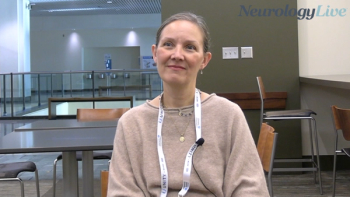
IL-12 Gene Therapy Inhibits Osteosarcoma Lung Mets in Mice
PHILADELPHIA-Intranasal delivery of an adenoviral vector containing the murine interleukin-12 (IL-12) gene has been shown to inhibit osteosarcoma lung metastases in mice. IL-12 is a molecule that activates the immune system and has recently been shown to have antiangiogenic activity. “Our hypothesis is that IL-12 interfered with tumor angiogenesis,” Laura L. Worth, MD, PhD, said at the annual meeting of the American Association for Cancer Research.
PHILADELPHIAIntranasal delivery of an adenoviral vector containing the murine interleukin-12 (IL-12) gene has been shown to inhibit osteosarcoma lung metastases in mice. IL-12 is a molecule that activates the immune system and has recently been shown to have antiangiogenic activity. Our hypothesis is that IL-12 interfered with tumor angiogenesis, Laura L. Worth, MD, PhD, said at the annual meeting of the American Association for Cancer Research.
Dr. Worth, junior faculty associate, M.D. Anderson Cancer Center, and her colleagues found that the mice that received the IL-12 treatment had a significant reduction in the size and number of tumors that had spread to the lungs: a median of 1.5 tumors vs 32 for controls.
SAOS-LM6 human osteosarcoma cells were produced by repetitive cycling through the mouse lung. The system of adenoviral-mediated IL-12 gene transfer was developed by Ling Chen, PhD.
The affected mice received a droplet containing either the IL-12 gene or another gene used as a control in the nose twice a week for 4 weeks. The data indicated that intranasal IL-12 gene therapy is feasible and effective, Dr. Worth said.
Since IL-12 is species specific, the researchers concluded that the murine
IL-12 produced following inhalation therapy affected the mouse microenvironment rather than the human tumor cells. Additional studies are underway to confirm this, she said. We believe that, by decreasing new blood vessel formation and depriving the tumors of necessary nutrients, this nasal therapy can effectively contain lung metastases, Dr. Worth concluded.
Newsletter
Stay at the forefront of cutting-edge science with CGT—your direct line to expert insights, breakthrough data, and real-time coverage of the latest advancements in cell and gene therapy.











































